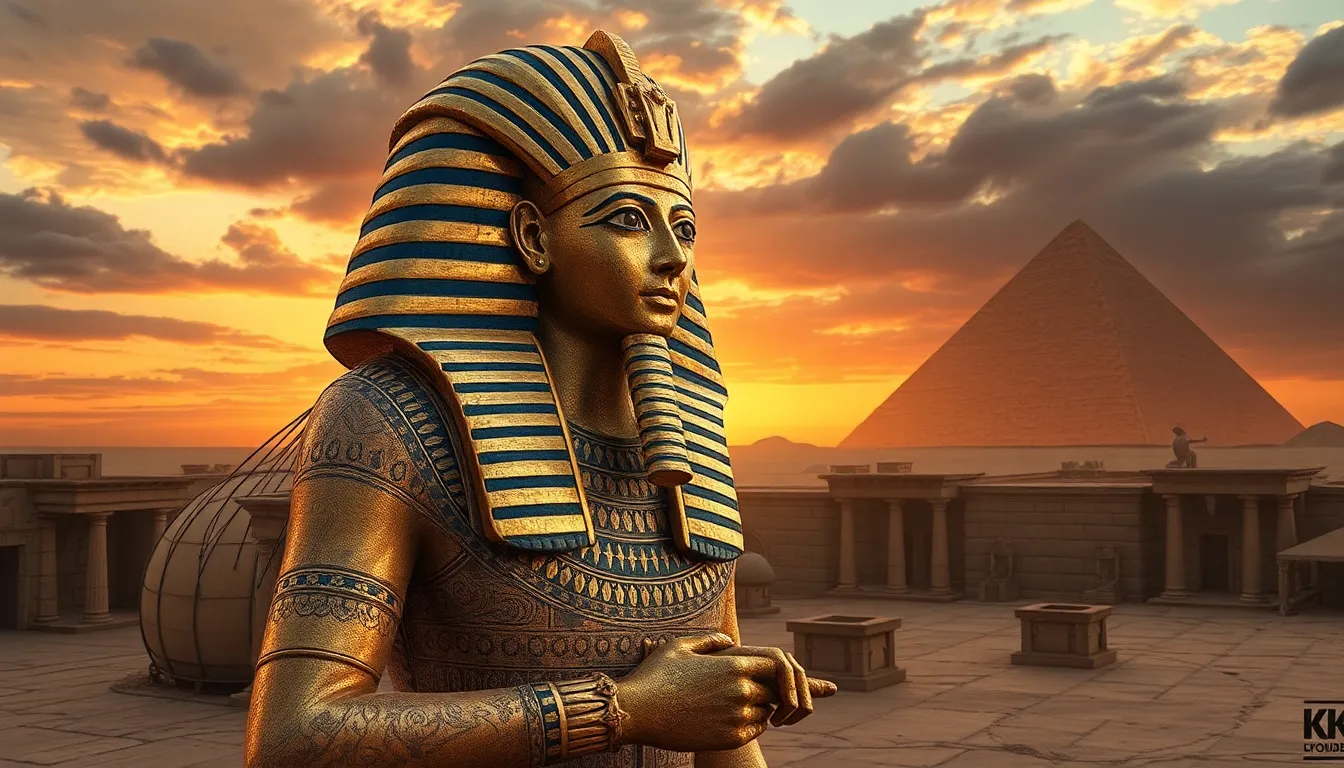Myths Surrounding the Reign of Pharaoh Seti I
I. Introduction
Seti I is a significant figure in ancient Egyptian history, known for his military prowess and monumental building projects. As the second pharaoh of the 19th Dynasty, his reign (c. 1290–1279 BCE) marked a period of resurgence for Egypt after the tumultuous times that preceded it. This article aims to debunk common myths surrounding Seti I and clarify the historical facts that define his legacy.
II. Historical Context of Seti I’s Reign
The 19th Dynasty of ancient Egypt is often regarded as a golden age, characterized by military expansion and architectural achievements. Seti I ascended to the throne during a politically complex time, following the reign of his father, Ramses I. His rise to power came amidst challenges from foreign powers and internal strife, which he skillfully navigated to establish a strong and stable kingdom.
III. Myth 1: Seti I Was a Ruthless Tyrant
Many historical texts and later interpretations paint Seti I as a ruthless leader. However, this portrayal is often exaggerated. While he was a strong ruler who enforced his authority, evidence suggests that he also engaged in diplomatic efforts to maintain peace with neighboring nations.
- Seti I conducted treaties with various territories, ensuring stability.
- He is known for his military strategies, which often prioritized negotiation over conflict.
In reality, Seti I balanced his military campaigns with diplomacy, reflecting a more nuanced leadership than mere tyranny.
IV. Myth 2: Seti I Built the Great Pyramid
Another common misconception is that Seti I was responsible for the construction of the Great Pyramid of Giza. However, the Great Pyramid was built during the reign of Pharaoh Khufu in the 4th Dynasty, long before Seti I’s time.
Seti I did, however, contribute significantly to Egyptian architecture. His most notable project is:
- The Temple of Seti I at Abydos: This magnificent temple is renowned for its intricate reliefs and inscriptions, showcasing his devotion to the gods and his role as a pharaoh.
Thus, while he was not the builder of the Great Pyramid, Seti I’s architectural contributions remain impressive and important in the context of ancient Egyptian history.
V. Myth 3: Seti I Was the Father of Ramses II
It is widely believed that Seti I was the father of Ramses II, one of Egypt’s most famous pharaohs. While this is historically accurate, the familial connections within the 19th Dynasty can be complex.
- Seti I was indeed the father of Ramses II, who succeeded him and continued his legacy.
- However, the lineage of Egyptian pharaohs often included many consorts and potential heirs, complicating the family tree.
Historical records, including inscriptions and tomb discoveries, confirm Seti I’s role as Ramses II’s father, solidifying his place in the lineage of Egypt’s rulers.
VI. Myth 4: Seti I Was a God-King With Divine Powers
In ancient Egyptian belief, pharaohs were often regarded as god-kings, embodying divine authority. While Seti I participated in religious rituals and was seen as a mediator between the gods and the people, the extent of his perceived divine powers is often overstated.
- Seti I performed many religious duties, including building temples and participating in ceremonies.
- His role was more of a religious leader than a divine ruler; he was seen as chosen by the gods to lead, rather than a god himself.
This distinction is essential for understanding the nature of kingship in ancient Egypt and Seti I’s role within that framework.
VII. Myth 5: Seti I’s Military Campaigns Were Entirely Successful
Seti I is often celebrated for his military campaigns, particularly against the Hittites and other neighboring regions. However, the reality of these campaigns is more nuanced than complete success.
- Seti I achieved notable victories, such as the Battle of Kadesh, which showcased his military skill.
- However, some campaigns ended in stalemate or limited gains, reflecting the complexities of warfare during his reign.
The impact of Seti I’s military endeavors was significant, as they helped to secure Egypt’s borders and maintain regional influence, but they were not without their challenges and failures.
VIII. Conclusion
In conclusion, the myths surrounding Pharaoh Seti I provide a fascinating glimpse into the intersection of history and legend in ancient Egypt. By debunking these myths, we gain a clearer understanding of Seti I’s true significance as a pharaoh who balanced military might with diplomacy, architectural innovation, and religious leadership.
Understanding the historical truths about Seti I and the 19th Dynasty encourages further exploration of this captivating period in ancient Egyptian history. As we continue to uncover the past, the legacy of Seti I remains an enduring subject of study and admiration.




